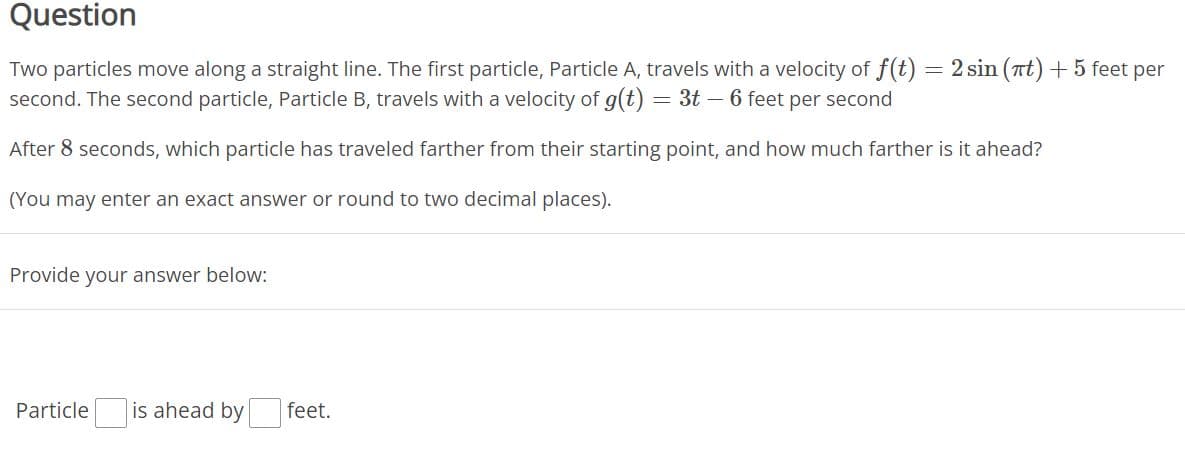Question Two particles move along a straight line. The first particle, Particle A, travels with a velocity of f(t) = 2 sin (at)+ 5 feet per second. The second particle, Particle B, travels with a velocity of g(t) = 3t – 6 feet per second After 8 seconds, which particle has traveled farther from their starting point, and how much farther is it ahead? (You may enter an exact answer or round to two decimal places). Provide your answer below: Particle is ahead by feet.
Question Two particles move along a straight line. The first particle, Particle A, travels with a velocity of f(t) = 2 sin (at)+ 5 feet per second. The second particle, Particle B, travels with a velocity of g(t) = 3t – 6 feet per second After 8 seconds, which particle has traveled farther from their starting point, and how much farther is it ahead? (You may enter an exact answer or round to two decimal places). Provide your answer below: Particle is ahead by feet.
Algebra & Trigonometry with Analytic Geometry
13th Edition
ISBN:9781133382119
Author:Swokowski
Publisher:Swokowski
Chapter6: The Trigonometric Functions
Section6.3: Trigonometric Functions Of Real Numbers
Problem 43E
Related questions
Question

Transcribed Image Text:Question
Two particles move along a straight line. The first particle, Particle A, travels with a velocity of f(t) = 2 sin (nt) + 5 feet per
second. The second particle, Particle B, travels with a velocity of g(t) = 3t - 6 feet per second
After 8 seconds, which particle has traveled farther from their starting point, and how much farther is it ahead?
(You may enter an exact answer or round to two decimal places).
Provide your answer below:
Particle
is ahead by
feet.
Expert Solution
This question has been solved!
Explore an expertly crafted, step-by-step solution for a thorough understanding of key concepts.
Step by step
Solved in 3 steps with 2 images

Recommended textbooks for you

Algebra & Trigonometry with Analytic Geometry
Algebra
ISBN:
9781133382119
Author:
Swokowski
Publisher:
Cengage

Algebra & Trigonometry with Analytic Geometry
Algebra
ISBN:
9781133382119
Author:
Swokowski
Publisher:
Cengage